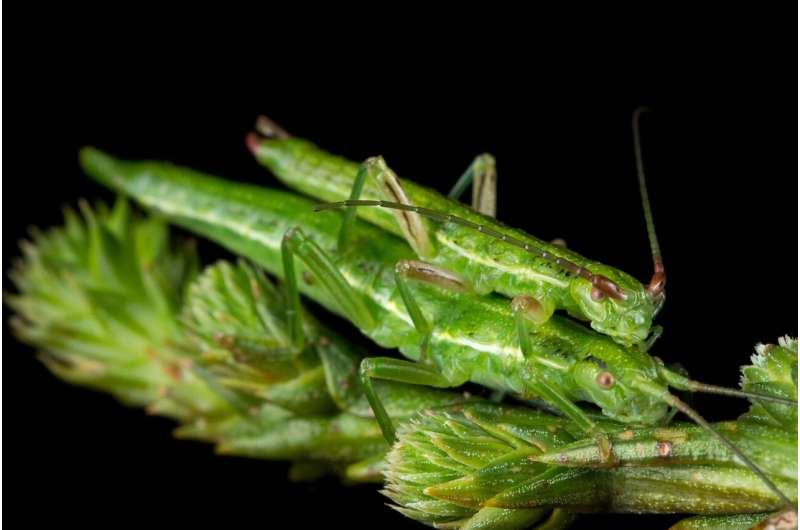Evolutionary fuel: Researchers study maintenance of an ancient chromosomal inversion

Genetic variation is the ultimate fuel for evolution, says Utah State University evolutionary geneticist Zachariah Gompert. But, over centuries, that fuel reservoir gets depleted in the course of natural selection and random genetic drift.
Whether, or how, genetic variation can persist over the long haul remains a big question for scientists. Gompert and colleagues from the University of Montpellier in France, the United Kingdom’s John Innes Center, the National Autonomous University of México, Querétaro; the University of Nevada, Reno; and the University of Notre Dame, publish their investigation of this question in the June 12, 2023, online edition of the Proceedings of the National Academy of Sciences.
“We examined how you maintain genetic variation in a species, and how such variation impacts adaptation,” says Gompert, associate professor in USU’s Department of Biology and the USU Ecology Center.
For the study, the team investigated stick insects (genus Timema), which feed on a wide variety of plants.
“There are more than a dozen species of Timema in western North America and they’re generalists that can eat many types of plants,” Gompert says. “But one species, Timema knulli, feeds and thrives on Redwood trees, which one of the only plants that other Timema species can’t thrive on as well or at all.”
It appears T. knulli has this ability because of a chromosomal inversion—that is, a change in the structure of its genome. Unlike a gene mutation, which is a change in the DNA sequence, a chromosomal inversion occurs, Gompert says, when two breaks in the chromosome are followed by a 180-degree turn of the segment and reinsertion at the original breakpoints.
“With an inversion, big chunks—in this case, 30 million DNA bases—of the chromosome get flipped backwards,” he says.
And this inversion in T. knulli, the team determined, is ancient.
“We think it occurred about 7.5 million years ago,” Gompert says. “And the cool thing is, T. Knulli populations still carry both versions of the alleles—the one for feeding and thriving on Redwoods as a host plant, and the original one that increases survival on the ancestral host plant—a flowering plant—and may be especially favorable in the heterozygous form.”
Environmental heterogeneity and gene exchange among migrating populations of stick insects contribute to the persistence of the new and ancestral chromosomal variants or polymorphism, he says, which may give the organisms a leg up in a changing world by allowing for ongoing evolution and adaptation.
“Rather than being a detriment, the complexity of evolutionary processes affecting this inversion provides resilience against the loss of genetic variation, and may foster long-term survival,” Gompert says.
More information:
Nosil, Patrik et al, Complex evolutionary processes maintain an ancient chromosomal inversion, Proceedings of the National Academy of Sciences (2023). DOI: 10.1073/pnas.2300673120
Citation:
Evolutionary fuel: Researchers study maintenance of an ancient chromosomal inversion (2023, June 12)
retrieved 13 June 2023
from https://phys.org/news/2023-06-evolutionary-fuel-maintenance-ancient-chromosomal.html
This document is subject to copyright. Apart from any fair dealing for the purpose of private study or research, no
part may be reproduced without the written permission. The content is provided for information purposes only.
For all the latest Science News Click Here
For the latest news and updates, follow us on Google News.

